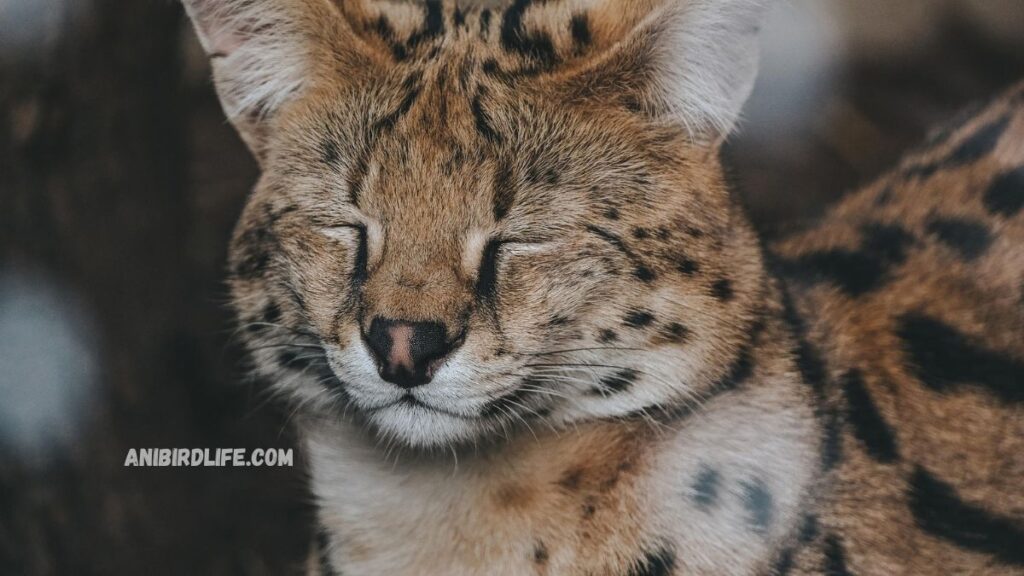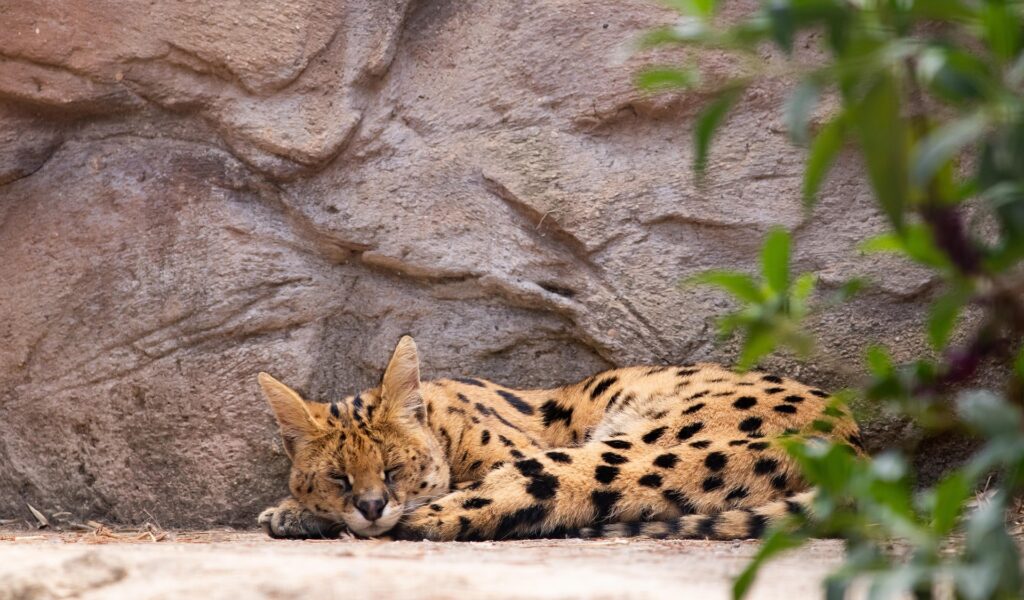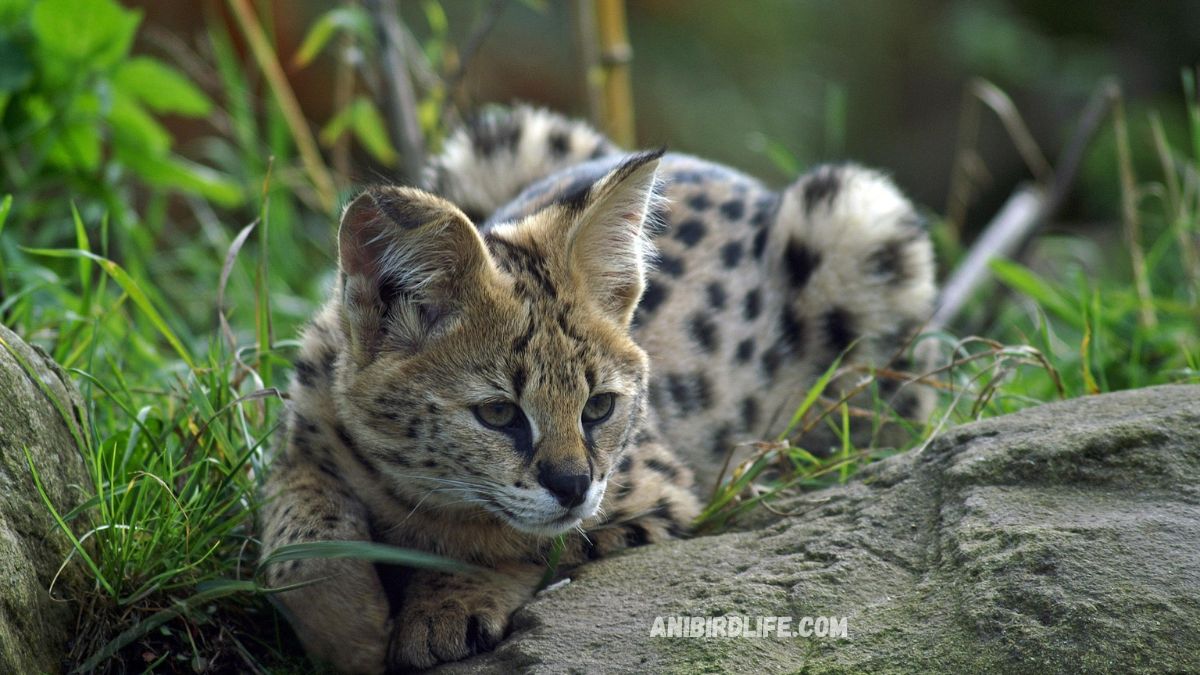The serval (Leptailurus serval), a graceful and secretive wild cat that epitomizes grace, agility, and adaptability, is one of the most intriguing animals on Earth and may be found in the grasslands of Africa. This is a fascinating topic for both scholars and wildlife enthusiasts due to its exceptional hunting abilities and beautiful appearance.
In-depth discussions of the serval’s habitat, behavior, nutrition, and difficulties in the wild are covered on this page. We’ll also address some of the most common queries regarding this amazing cat.
An Overview
Originating in Africa, they are a medium-sized wild cat that is mostly found in sub-Saharan areas. Its wide, rounded ears, long legs, and slim body make it easy to identify. These physical characteristics are essential to the serval’s survival and are not only ornamental. The serval is a skilled hunter with excellent hearing and leaping skills that enable it to capture prey with incredible accuracy.
The African Grasslands are the habitat.
African grasslands sometimes referred to as savannas, are ideal for them because the long grasses offer enough shelter for stalking and hunting. Although they can also be found in forests, swamps, and mountainous areas, their preferred habitat is grasslands.
While the long grasses provide cover from larger predators, the open environment enables them to employ their acute senses to identify prey.
The serval’s range includes nations such as Botswana, South Africa, Tanzania, and Kenya. But because of habitat degradation brought on by agricultural growth and human encroachment, their range has drastically shrunk, making conservation efforts essential to their existence.

Physical Features: Designed to Survive
Their distinctive physical characteristics demonstrate how successful their evolution has been:
Long Legs: Of all the cat species, they have the longest legs about body size. With the help of these legs, they may jump up to ten feet in the air to capture birds or attack prey that is concealed in tall grass.
Big Ears: In addition to being cute, their enormous ears serve a very practical purpose. Servals have an advantage in hunting since they can pick up even the smallest sounds of rodents or insects moving beneath.
Spotted Coat: In the grasslands, the serval’s golden-yellow coat with black stripes and spots offers superior camouflage, allowing it to fit in with its surroundings.
Sharp Claws and Teeth: These are vital equipment for catching and eliminating prey, which frequently consists of birds, reptiles, and small mammals.
The Expertise of the Serval in Hunting and Diet
As carnivores, servals mostly hunt tiny animals. They eat the following: • Rodents, including mice and rats
Birds, frogs, insects, and small reptiles
Even when prey is hidden underground or under tall grass, they can still discover it thanks to their keen sense of hearing. They jump into the air and land on their prey with amazing accuracy as soon as they sense movement. In addition to being effective, this hunting method reduces the possibility of getting hurt by larger prey.
When it comes to hunting, it’s interesting to note that they have a high success rate nearly 50% of their attempts end in a catch. Compared to other big cats, such as lions, which have a success rate of about 20–25%, this is far greater.
Social Structure and Behavior
They are solitary creatures that only congregate for mating. They use vocalizations and scent marks to demarcate their territory since they are territorial. Generally speaking, males’ greater territories overlap with those of multiple females.
Since they are mostly nocturnal, these cats are most active at night. But they can also be spotted hunting throughout the day, particularly in places where people don’t bother them too much.

Lifespan and Reproduction
They are sexually mature between the ages of 18 and 24 months. A female serval gives birth to a litter of one to four kittens after a gestation period of roughly ten to eleven weeks.
The kittens are blind at birth and are dependent on their mother for safety and sustenance. Around two weeks of age, they start to investigate their environment, and by five months, they are weaned.
Because there are no predators and they can eat regularly, captive servals can live up to 20 years, but their natural lifespan is 10–12 years.
Conservation and Threats
In spite of their versatility, they are threatened by a variety of factors in the wild:
Habitat Loss: The serval’s native habitat has been greatly diminished as a result of the conversion of grasslands into urban and agricultural regions.
Poaching: They are occasionally caught for the exotic pet trade or poached for their fur.
Human-Wildlife Conflict: As human populations grow, servals and people are clashing more frequently, which frequently results in persecution.
To save them and their habitats, conservation initiatives are being implemented. In addition to putting policies in place to lessen conflict between people and wildlife, organizations are trying to increase public awareness of the significance of these cats. To control their trade and prevent exploitation, they are also included in Appendix II of the Convention on International Trade in Endangered Species (CITES).
FAQs
1. What is the diet of a serval?
As carnivores, they mostly consume insects, frogs, birds, and small mammals like rodents. They are proficient hunters who capture animals by using their keen hearing and agility.
2. What is the residence of servals?
Native to Africa, they are frequently found in woods, wetlands, and grasslands. They favor places where there is long grass because it offers cover for hunting.
3. What is the size of a serval?
They are medium-sized cats that weigh 20–40 pounds and have a body length of 23–36 inches plus an extra 12–18 inches for their tail.
4. Do they face extinction?
Despite being listed as “Least Concern” on the IUCN Red List, serval populations are dropping as a result of habitat degradation and conflicts between people and wildlife. To guarantee their existence, conservation initiatives are crucial.
5. Is it possible to have servals as pets?
Although they are occasionally kept as exotic pets, they are wild creatures with unique requirements that are challenging to satisfy in a home environment. Owning a serval is often discouraged and requires specific permits in many regions.
6. How do they exchange messages?
They use vocalizations including hissing, growling, and purring to communicate. To mark their territory and let other servals know they are there, they also employ scent markers.
7. How does the serval function within the ecosystem?
To keep their ecology in balance, servals are essential in regulating rodent numbers. Larger predators like hyenas and leopards also feast on them.
8. How high is a serval capable of jumping?
They are great jumpers; they can jump up to ten feet to pounce on prey or grab birds.
9. Are servals a social species?
No, servals are solitary creatures that only congregate for mating. They draw boundaries to prevent confrontations with other servals because they are territorial.
10. What are the primary dangers they facing?
Poaching, habitat degradation, and conflict between humans and wildlife are the main risks to servals. To lessen these risks and save serval populations, conservation initiatives are essential.
In conclusion
The serval, which is ideally suited to living in the grasslands of Africa, is a striking illustration of the inventiveness of nature. Their remarkable hunting abilities and distinctive morphological characteristics are testaments to the intricacy and beauty of nature. However, the future of these amazing cats is in jeopardy since human activities are still encroaching on their environment.
We can guarantee the survival of the serval in the wild for future generations by promoting conservation initiatives and increasing public understanding of the value of wildlife protection.
